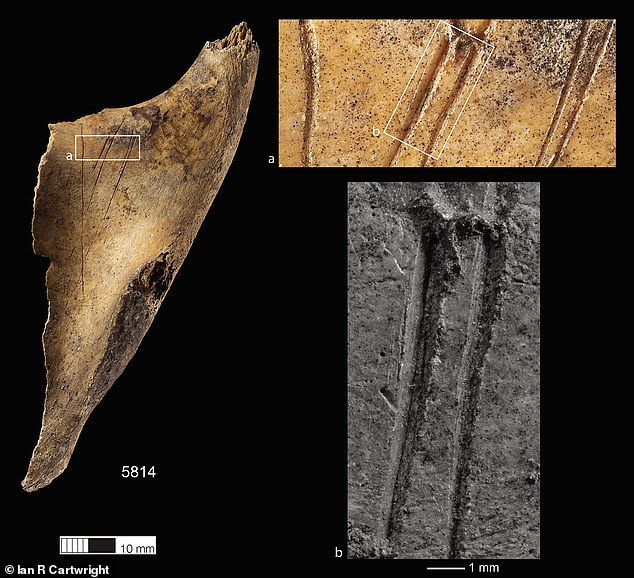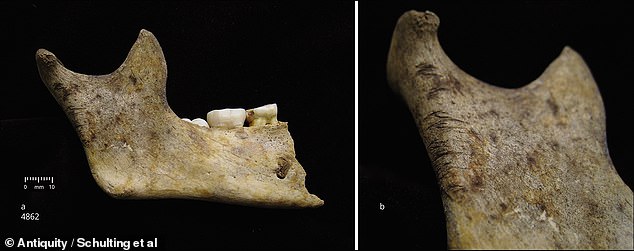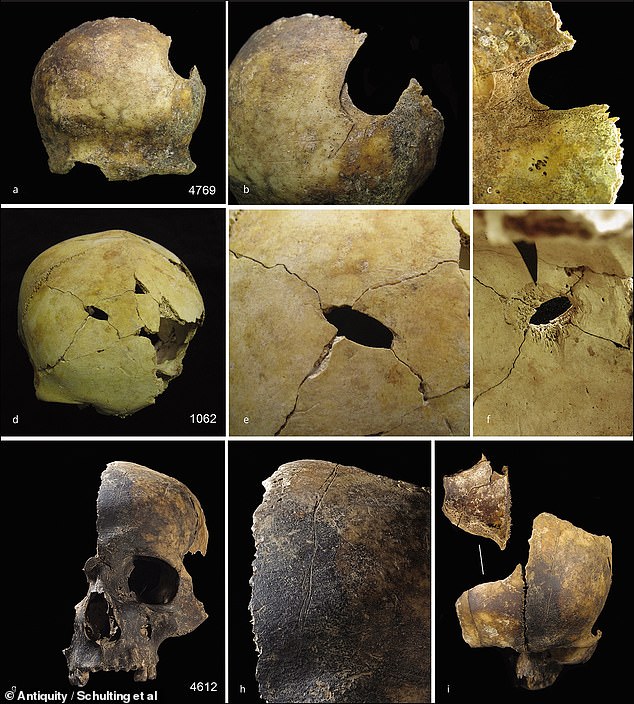The Bronze Age was a time of cultural and technological change in Britain.
But it was also a time of cannibalism, according to a new study.
Analysis of human remains dating back to 2500 BC indicates that dozens of people were killed, massacred and consumed during a very violent incident.
And it casts doubt on the idea that Britain in the Early Bronze Age was relatively peaceful, experts said.
A team of archaeologists, led by the University of Oxford, examined more than 3,000 human bones and bone fragments unearthed in Charterhouse Warren, a village in Somerset.
They were first discovered in the 1970s in a 15-metre-deep pit and represent at least 37 individuals, a mix of men, women and children.
Unlike most contemporary burials, the skulls showed evidence of a violent death from blunt force trauma, for example, a blow to the head with something hard.
Closer analysis of the bones revealed numerous cut marks and perimortem fractures that occurred at the time of death, suggesting that they were intentionally butchered and may have been partially consumed.
Analysis of human remains dating back to 2500 BC indicates that dozens of people were killed, massacred and consumed during a very violent incident.

A team of archaeologists, led by the University of Oxford, examined more than 3,000 human bones and bone fragments unearthed in Charterhouse Warren, a village in Somerset.
While hundreds of human skeletons have been found in Britain dating from a similar era, direct evidence of violent conflict is rare.
“In fact, we found more evidence of injuries in skeletons dating from the Neolithic period in Britain (10,000 BC) than from the Early Bronze Age, so Charterhouse Warren stands out as very unusual,” said lead author , Professor Rick Schulting.
“It paints a considerably darker picture of the period than many would have expected.”
Investigators said evidence of a violent death, with no signs of a fight, implies the victims were taken by surprise.
It is likely that they were all massacred and that the carnage was carried out by their enemies, they concluded.
Many cattle bones were found mixed with human bones, suggesting that the people of Charterhouse Warren had plenty to eat without needing to resort to cannibalism.
Instead, cannibalism may have been a way to dehumanize the dead, the team suggests, and that by eating their meat and mixing the bones with those of cows, the killers compared their enemies to animals.
While it is impossible to know why the massacre took place, researchers suggest that it could have been social factors such as robberies or insults, which caused tensions to rise disproportionately.

Investigators said evidence of a violent death, with no signs of a fight, implies the victims were taken by surprise.
“Charterhouse Warren is one of those rare archaeological sites that challenges the way we think about the past.” Professor Schulting added.
“It is a stark reminder that prehistoric people could equal more recent atrocities and sheds light on a dark side of human behavior.
“The fact that it is unlikely to have been an isolated event makes it even more important that its story be told.”
The findings were published in the journal Antiquity.

